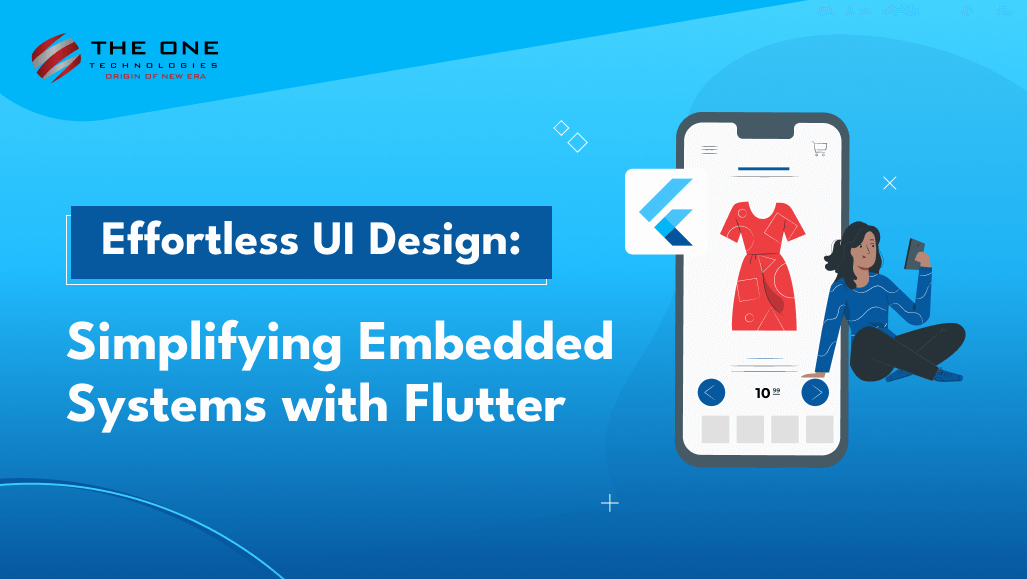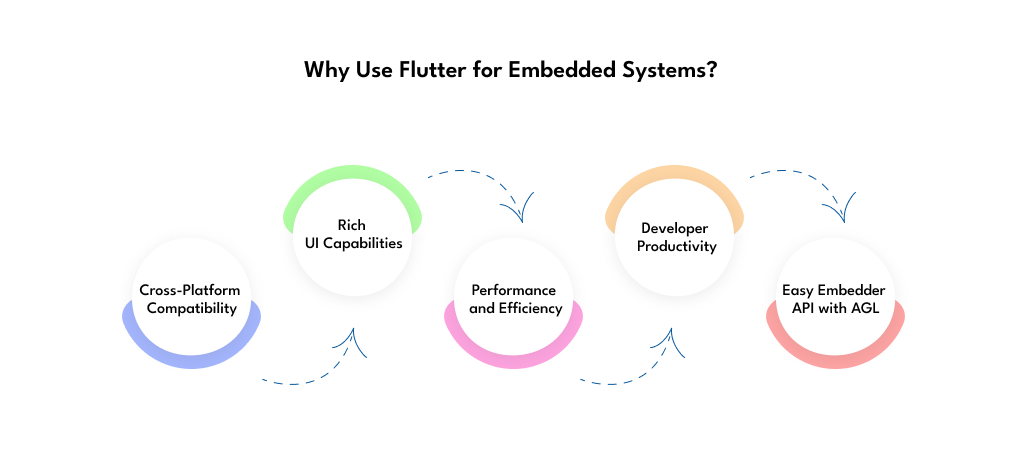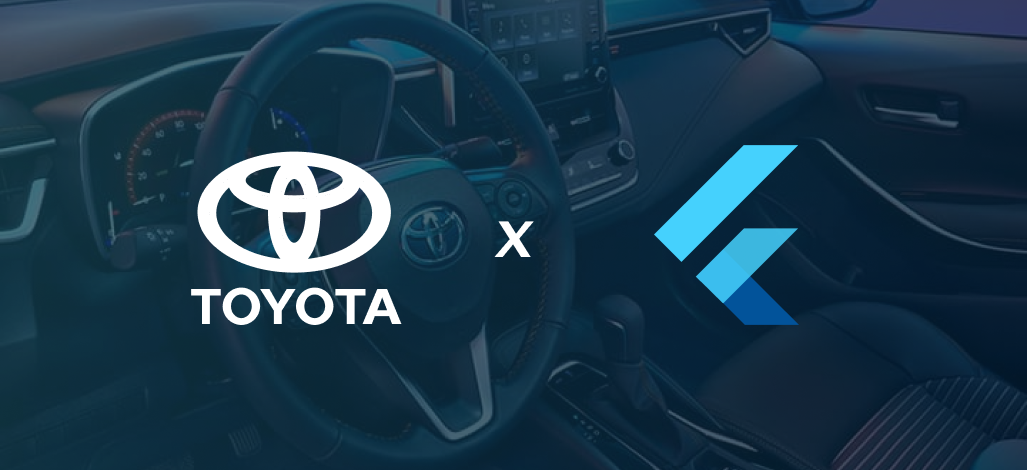Effortless UI Design: Simplifying Embedded Systems with Flutter

Quick Summary: "This post explores how Flutter revolutionizes embedded systems by providing a seamless approach to UI design. Its cross-platform capabilities enable developers to create visually appealing and consistent user interfaces across various embedded devices, streamlining development efforts. This technology reduces complexity, accelerates iteration cycles, and optimizes performance, making it ideal for resource-constrained environments. Read further and learn more about the Flutter Embedded system, its features, and its importance!"
Table of Content
- Introduction
- What are Embedded Systems?
- Why Use Flutter for Embedded Systems?
- Features of Flutter for Embedded Devices
- Why did Toyota opt for Flutter for embedded development?
- BMW Also Chooses Flutter for Development
- How to Run Flutter Apps Across Devices?
- Conclusion
Introduction
We all are aware that designing user interfaces (UIs) smoothly can be an enormous problem. But when new technologies like Flutter emerge, the procedure is being transformed as it is well-known for its adaptability in the development of mobile apps, is currently gaining traction in the Flutter embedded systems space. Imagine being able to create engaging UI experiences for embedded devices with the same efficiency and convenience of use as creating Flutter mobile apps!
Being a top Flutter development company, we are eager to start this revolutionary adventure of using Flutter embedded system and how it makes UI design simpler. Let's discuss how Flutter is reshaping the landscape of embedded UI design, offering ease and creativity in developing delightful user experiences for a diverse array of devices.
What are Embedded Systems?
Specialized computing systems called embedded systems are made to carry out particular tasks inside of bigger systems or devices. Usually, these systems are integrated into commonplace machinery and gadgets to offer functioning, control, and monitoring. Embedded systems, in contrast to general-purpose computers, are designed with specialized hardware and software to fulfil the demands of the application they are intended to be used for. They frequently react to outside stimuli instantly, functioning in real time. Microcontrollers found in consumer electronics, industrial machinery, automobile control systems, medical equipment, and home appliances are typical examples of embedded systems.
A multidisciplinary approach integrating knowledge of hardware design, software development, and system integration is necessary for the design and development of embedded systems. While adhering to strict size and cost limits, embedded system engineers must maximize performance, power consumption, and reliability. With the development of technology, embedded systems are getting more and more complicated, integrating graphical user interfaces, wireless networking, and complex control algorithms.
Why Use Flutter for Embedded Systems?
Using Flutter for embedded systems allows for rapid development with a single codebase and provides a rich, customizable user interface. It also ensures high performance across multiple platforms, enhancing the user experience. Here are some more reasons to choose Flutter for embedded systems, such as:

- Cross-Platform Compatibility
Embedded systems can benefit from Flutter's capacity to produce UI experiences that are uniform across several platforms. Flutter's unified codebase allows developers to create user interfaces (UIs) that are optimized for a wide range of embedded devices, hence saving time and effort during development.
- Rich UI Capabilities
Among the many UI elements and capabilities that Flutter provides are customizable widgets, animations, and graphics rendering. This improves user experience and product attractiveness by enabling developers to design aesthetically pleasing and captivating user interfaces for embedded devices.
- Performance and Efficiency
Flutter is renowned for its excellent effectiveness and performance. Even on embedded devices with limited resources, the rendering engine of the framework, which is based on the Skia graphics library, guarantees seamless interactions and animations. Flutter programs optimize performance for particular hardware by compiling into native ARM code.
- Developer Productivity
With Flutter's hot reload functionality, developers can inspect code changes instantly without having to restart the application, which speeds up the development process. This iterative development methodology increases output and speeds up the embedded system prototype.
- Easy Embedder API with AGL
By integrating an API, any infotainment system running Automotive Grade Linux can make use of the technology. The Flutter engine's architecture makes it quite easy to allow embedding in several target contexts. All that has to be done is cross-compile the engine and place it within an embedder. A lot of engineers can integrate Flutter apps with in-car systems with ease because of the Embedder API.
Even though Flutter's embedder API is still in its early stages of development, it offers a lot of features that let us use the beautiful Flutter UI for a variety of devices, including IoT devices, washing machines, smart refrigerators, and many more.
Features of Flutter for Embedded Devices
- Small Footprint
Flutter was designed to be efficient and lightweight. Its compact footprint makes it a desirable choice for embedded systems with constrained memory and processing power. On limited devices, the framework's low overhead helps to improve speed.
- Customizable Rendering Engine
Skia, the rendering engine used by Flutter, is tailored for embedded systems. Because Skia renders UI components with flexibility, it may be used with a variety of screen sizes and resolutions that are frequently seen in embedded devices.
- Hardware Accessibility
Plugins and packages that give developers access to embedded devices' native hardware functionalities are supported by Flutter. This comprises peripherals that are essential for embedded applications, including as sensors, cameras, Bluetooth, and others.
- Platform Adaptations
The versatility of Flutter extends to custom hardware running Linux as well as embedded Linux-based platforms like Raspberry Pi. To facilitate the deployment of Flutter apps on a wider variety of devices, the Flutter team is always working to enhance support for these platforms.
- Development Tools
A set of developer tools makes the application development process more efficient. This features significant debugging tools, support for well-known IDEs like Visual Studio Code, and hot reload for fast iteration.
- Community Support
Developers are researching and contributing to the usage of Flutter in embedded systems, even though it is still in its early stages of development. This indicates that further tools, plugins, and solutions designed specifically for embedded installations are coming to market.
- Real-Time Updates
Because it allows for real-time changes, Flutter is a good fit for applications that need to be responsive and have dynamic content. For embedded systems utilized in Internet of Things settings, this is advantageous.
- Future Roadmap
The Flutter team keeps making investments to enhance embedded platform support. This entails improving performance, developing custom use cases for embedded apps.
Flutter is an appealing option for developers working with embedded devices because of its overall adaptability and efficiency, especially for those looking to use a single codebase for cross-platform development. Planning an embedded project with Flutter, however, necessitates taking particular hardware constraints and requirements into account.
Why did Toyota Opt for Flutter for Embedded Development?

Toyota chose Flutter for embedded development because of its effective performance and strong cross-platform capabilities. Toyota can now create applications with Flutter that work flawlessly on a variety of embedded platforms, saving money and effort on codebase maintenance. Toyota can launch apps on several embedded devices using a single codebase by utilizing Flutter, which guarantees uniformity in functionality and user experience across the board.
The small footprint of Flutter makes it ideal for low-resource embedded systems. With the help of its Skia graphics engine, it provides optimum rendering and seamless user interface performance across a range of screen sizes and resolutions. Toyota is confident in the long-term viability of the Flutter framework for embedded applications because of the framework's active development and expanding community support. Also, it gives Toyota the ability to effectively and efficiently provide rich, feature-rich experiences on embedded devices.
BMW Also Chooses Flutter for Development
_638556006462048947.png)
BMW's choice to use Flutter for development is evidence of the framework's rising acceptance and usefulness in the car sector. BMW chose Flutter because it wants to make use of its cross-platform capabilities to make it easier to create beautiful, consistent user experiences across a range of platforms and devices. By making this decision, BMW can increase Flutter app development efficiency while giving its customers a consistent brand experience.
The adoption of Flutter further demonstrates the framework's applicability in building creative and eye-catching apps in the automotive industry. BMW can design dynamic, responsive interfaces that satisfy the changing needs of contemporary automotive technology while adhering to its brand's standards thanks to Flutter's extensive feature set and customizable support. This calculated action shows how committed BMW is to using innovative technologies like Flutter to spur digital innovation and improve user experience throughout its product line.
How to Run Flutter Apps Across Devices?
As already addressed, developers can easily customize the hardware and software capabilities of contemporary solutions with Flutter thanks to its broad cross-platform flexibility.
Consider the Flutter fanbase's community support, which enables you to develop excellent Flutter-embedded solutions.
Flutter for Embedded Systems Support
This method of integrating Flutter front ends on embedded systems is the most effective. The frontend code is written in Dart, compiled into native code (Java, Kotlin, C++, Swift, etc.) and executed as a native program using a native graphics engine as opposed to using browser technologies.
Flutter Web Support
You may write a traditional Web user interface (UI) in Dart and then convert it to JavaScript code. Like any other web frontend, the JavaScript code can be installed and linked to any backend. Instead of using native rendering, the user interface is still rendered using browser technologies.
Conclusion
The integration of embedded systems and Flutter signifies a significant advancement in the effectiveness and simplicity of user interface design. Flutter's entry into this space has expedited the development process and made it possible to create engaging user interfaces on a variety of embedded devices with previously unheard-of ease.
For those seeking to capitalize on the benefits of Flutter embedded systems, now is the time to hire Flutter app developers and see the world of possibilities in UI design and innovation. Accept this revolutionary technology for Flutter app development and provide your embedded systems with intuitive, eye-catching user interfaces.










